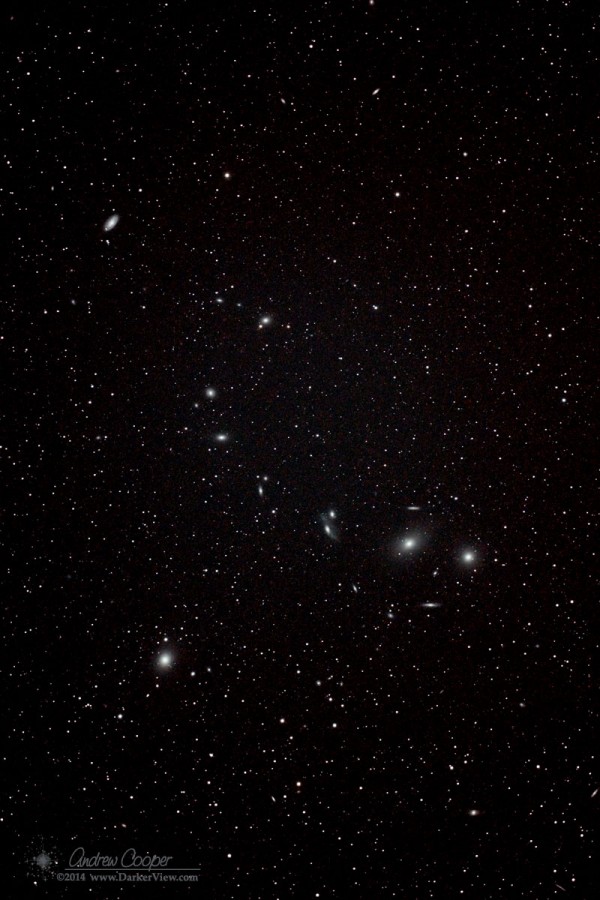Yes, the Kona winds are still here resulting in more good seeing over Waikoloa. Another pass on Jupiter tonight, this time featuring the Great Red Spot…
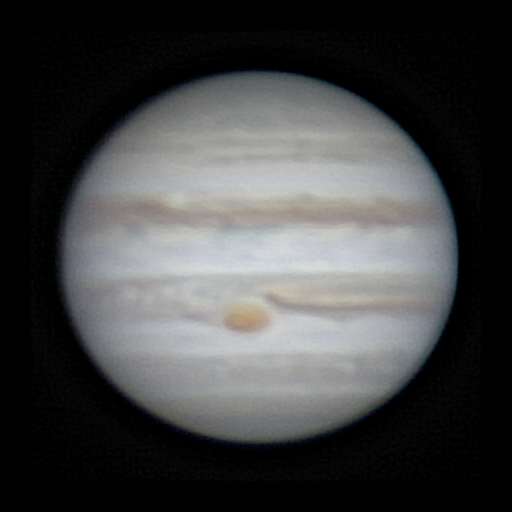
When you want to see the stars, find someplace dark
After a stormy Friday night we had clear skies and decent seeing over Waikoloa again last night. Again I set up the telescope for a little planetary photography. The seeing was marginally better, and so is the resulting image.
The night also featured three moons in close to the planet. Io can be seen alone to one side of the Planet while Europa and Ganymede form a close pair. Ganymede is the larger moon and slightly closer to the planet
I really need to do this from the summit under good seeing some time.
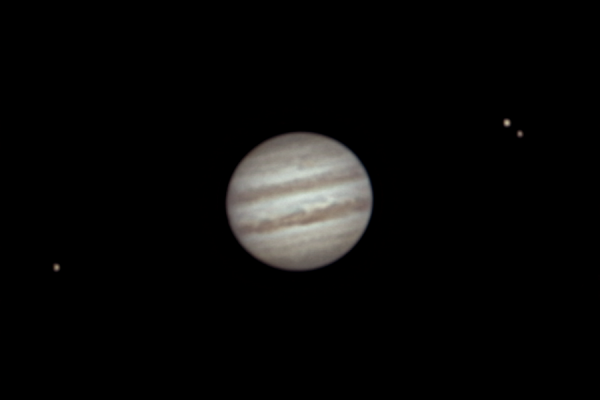
It has been a while since the last good photographic comet. Since comet ISON disintegrated at perihelion a year ago, we have had few opportunities to get a really nice comet photo. It is the surprise of comet C/2014 Q2 Lovejoy that changed this.
Better yet… The comet is well placed for photography in the late evening and early morning sky. While fellow sky watchers on the south side of our planet have been enjoying the comet as it has brightened, for most northern hemisphere observers it is still rather low. In the past couple weeks it has moved far enough north that it is now nicely positioned to observe from Hawaiʻi. I have been following the comet for a while, catching it in binoculars from the house. We showed it to students of Paʻauilo Elementary in club telescopes as they camped out at the Kilohana Girl Scout Camp earlier this week.
Unfortunately it is still low enough that my neighbor’s trees prevent me from photographing it from the driveway. Thus I took the opportunity to pack up the ‘scope and head for Hale Pohaku and the Mauna Kea Visitor Information Station for a night of photography.
The Mauna Kea VIS is busier than ever, the numbers of tourists coming to this free show just continued to increase. Parking is now a major issue, with even the lower gravel lots full of visitor vehicles. Fortunately, with some discussion and name dropping, the rangers allowed me and my vehicle past the barricades into the main lot so I could set up just off the patio. I would be entertaining guests at the telescope and answering questions all evening, becoming part of the show.
With 24 exposures, each 4 minutes long, it is possible to animate the comet’s movement among the stars. Just process the photos individually and import into photoshop as an animation, then export as an animated GIF. Just click on the image to view…

An assembled version of the imagery I took of comet C/2014 E2 Jacques. 24 x 4min exposures, stacked in Images Plus and final processed in Photoshop. While traces of the tails were visible, I was unable to preserve the faint signal in this processed color frame.
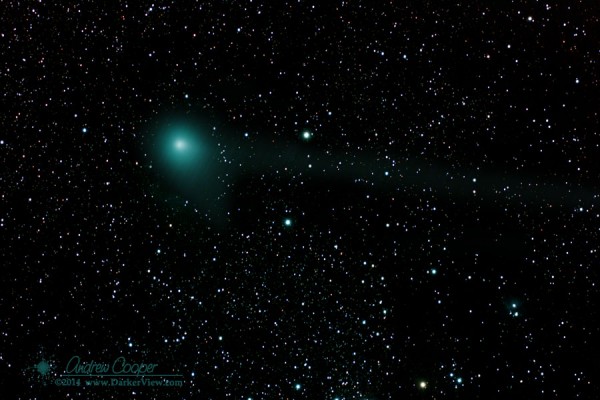
A bright comet is always a good reason to drag the telescope out of the garage. In this case it is comet C/2014 E2 Jacques, currently about magnitude 7 in Cepheus. The comet is rising over the house about 9pm and available for shooting from my usual driveway setup location.
Setup went pretty smoothly, I have not changed anything in the basic configuration for a while. Shooting the Canon 6D on the TV-76mm scope. I did have some issues getting the autoguider to calibrate. The low magnification and high latitude meant the the calibration moves are just too small. Realizing that this also meant that any potential guide errors would also be small, I just shut the autoguider off. No guiding errors are visible in the four minute exposures.

Yes, the shot looks pretty bad… The frame is a quick process of a single sub-frame, just a white balance and curve adjustment in Photoshop. As I write this there are 13 completed exposures with another 17 to go. I do not think I will complete the sequence, I do need to go to bed sometime soon, I have to head to Hilo early tomorrow morning for a conference at Gemini.
Given a couple dozen good exposures I should be able to produce a much better image than is seen here. So far all of the sub-frames look good indeed, nice signal to noise, a bit of nebulae showing near the comet, and maybe a trace of the wispy ion tail. It will be a few days before I have a chance to properly process the image.
Taking star trails is one of the easiest forms of nighttime photography. it requires less equipment than full out astrophotography, only a camera that can take a long exposure and a tripod. In a pinch you can do without the tripod.
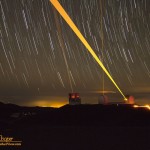
For a number of reasons taking one very long exposure is a problem with digital cameras. Without getting into a technical discussion of noise, dark current and hot pixels we will simply advise taking short exposures. You can always try a twenty minute or half hour exposure and see for yourself. Thus the technique is to take a series of short exposures, usually one to five minutes long, and add these together in processing. By taking a series of short exposures, the final exposure length is limited only by the camera battery or the arrival of dawn.
If the camera is sensitive enough, and you have a fast lens, you might try starscape photography, where the stars are not trailed by the motion of the Earth. In contrast, star trail photography can be done by almost any camera that can take a long exposure. The difference is in the length of the exposures, long versus short, star trail or starscape.
The center of Virgo is thick with galaxies. The nearest large super-cluster of galaxies lies a mere 53 million lightyears away, includes upwards of 1300 member galaxies and spans over 8° on the sky. The center of the Virgo Cluster is marked by the large elliptical galaxies M84, M86 and M87.
Markarian’s Chain is the long sweep of galaxies stretching from the M84 and M86 pair at the lower right to NGC4477 at the upper left.
